NVIDIA Shield Review: At the Crossroads of PC and Mobile Gaming
by Brian Klug on July 31, 2013 12:14 AM ESTGFXBench 2.7.0
While GFXBench 2.7 (formerly GLBenchmark 2.7) doesn't yet take advantage of OpenGL ES 3.0 (GLB 3.0 will deliver that), it does significantly update the tests to recalibrate performance given the advances in modern hardware. Version 2.7 ditches classic, keeps Egypt HD and adds a new test, T-Rex HD, featuring a dinosaur in pursuit of a girl on a dirt bike.
Scene complexity goes up tremendously with the T-Rex HD benchmark. GLBenchmark has historically been more computationally bound than limited by memory bandwidth. The transition to T-Rex HD as the new flagship test continues the trend. While we see scaling in average geometry complexity, depth complexity and average memory bandwidth requirements, it's really in the shader instruction count that we see the biggest increase in complexity.

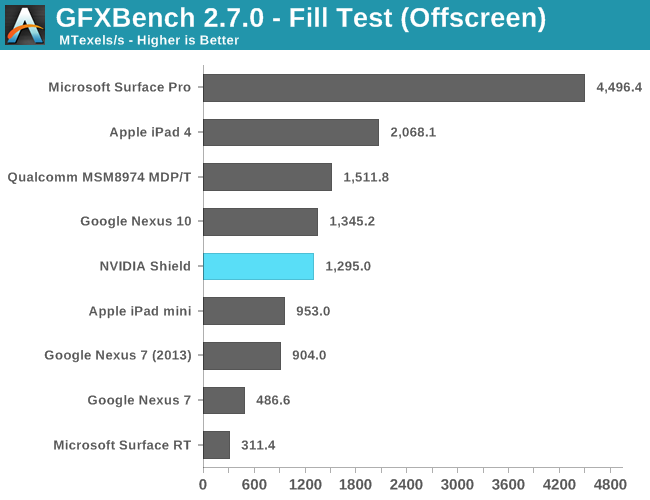
The fill rate tests put Shield significantly behind the iPad 4 and about on par with the Nexus 10. Looking at Triangle throughput we see Apple hold onto an advantage there as well, although Tegra 4 does show impressive gains over Tegra 3.
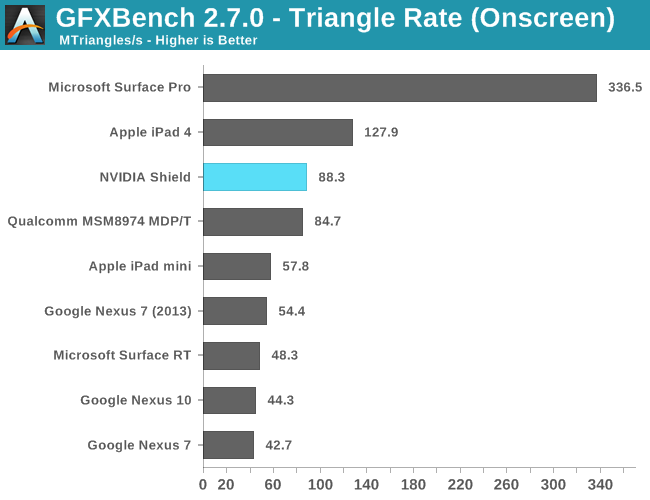
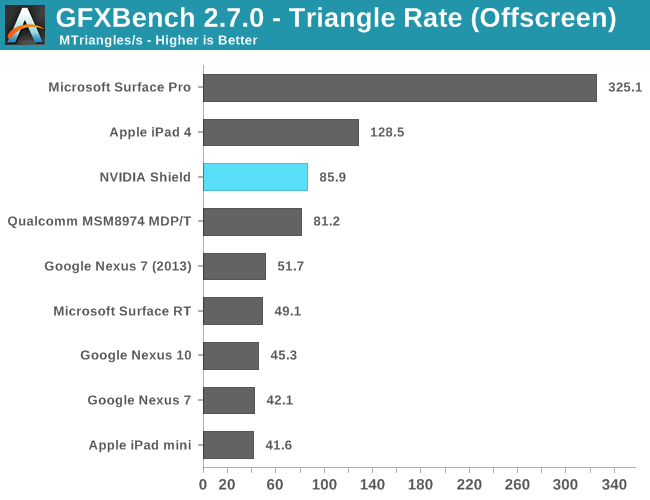
It's really in the pixel shader bound tests that Tegra 4 really excels:
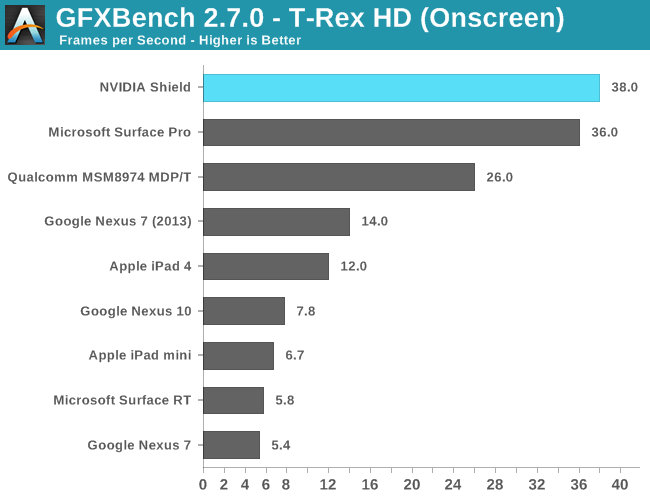
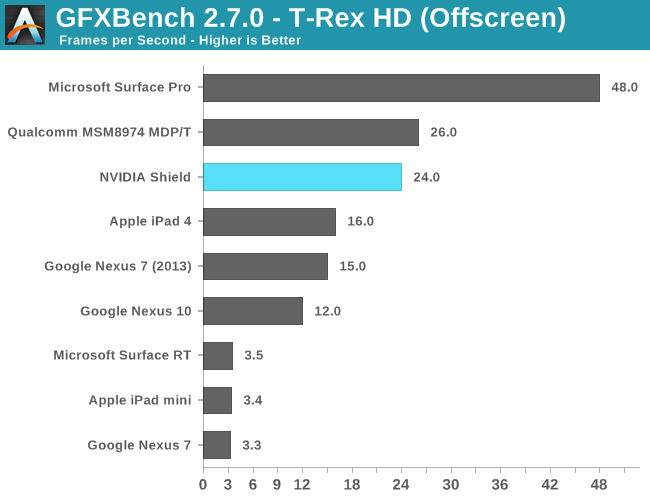
As promised, Tegra 4's GPU manages to outperform the iPad 4's PowerVR SGX 554MP4 in GFXBench 2.7. The 50% performance advantage is appreciable, and should be very nice on a high res display. It's a shame Shield is stuck with a 720p panel. Note that we're also half way to the performance of Intel's HD 4000 here. The Adreno 330 comparison is, once again, extremely close. Qualcomm pulls ahead by 8% and that's without a fan in a tablet chassis.
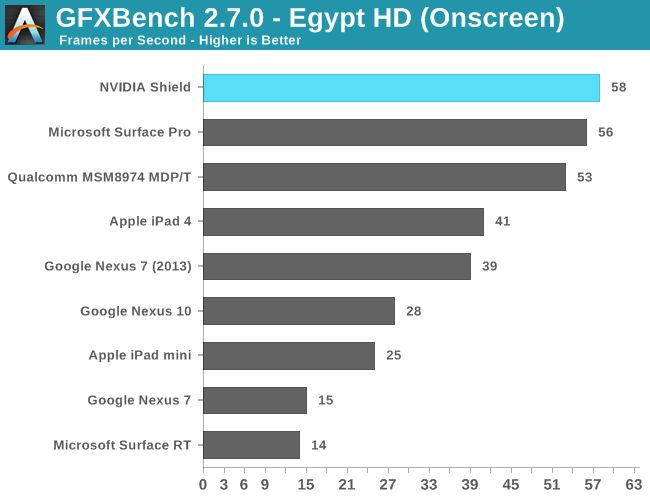
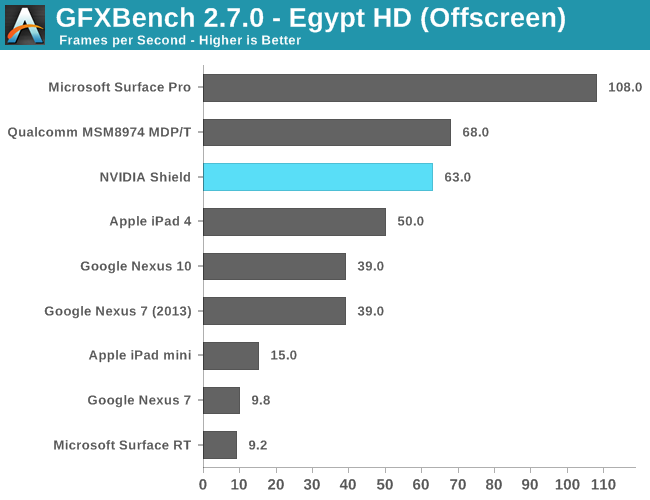










134 Comments
View All Comments
chizow - Wednesday, July 31, 2013 - link
I agree, I think it's an extremely impressive first effort, I just don't know if it will do well enough to warrant future iterations and improvements.danstek - Wednesday, July 31, 2013 - link
This thing has a better WiFi implementation than most laptops and game consoles? What...whyso - Wednesday, July 31, 2013 - link
Actually seems like a win.The question is if there is a market for this sort of device.
Jumangi - Wednesday, July 31, 2013 - link
There's is no question about a market...none exists for this device. Nvidia made this thing to show off the Tegra 4.Dribble - Wednesday, July 31, 2013 - link
Users of the PS Vita, Nintendo DS, etc would disagree with you. There is a market, a pretty big one.darkich - Wednesday, July 31, 2013 - link
..and this device absolutely blows every one of them away.Spunjji - Wednesday, July 31, 2013 - link
Literally. With its fan.-badum tsh-
Jumangi - Wednesday, July 31, 2013 - link
Lolz, The 3D DS is doing well because its Nintendo with their long history of portables but its on a pace well behind it predecessor. The Vita? Its a dead machine for now. Sales are horrible. This device costs more and has far less software gaming support. So looking at reality no their is no market for a $300 portable gaming machine.Touche - Wednesday, July 31, 2013 - link
You mean, they made it because nobody else wanted Tegra 4.tabascosauz - Thursday, August 1, 2013 - link
The 4 and 4i Phoenix FFRDs served that purpose, and they did it fairly successfully. So no, the Shield is Nvidia's entry into the DS and Vita world.